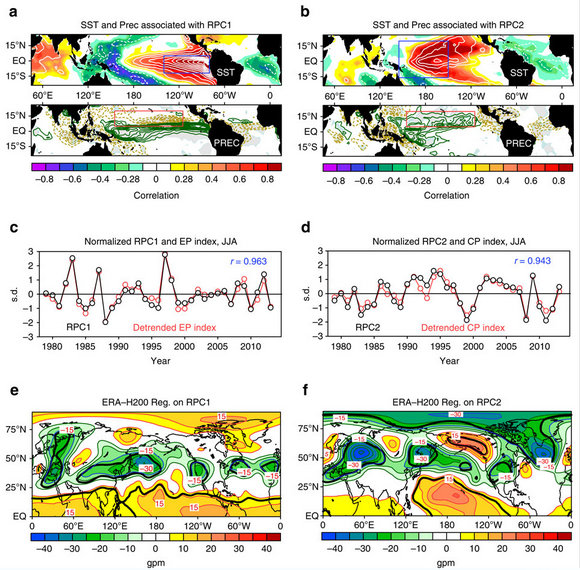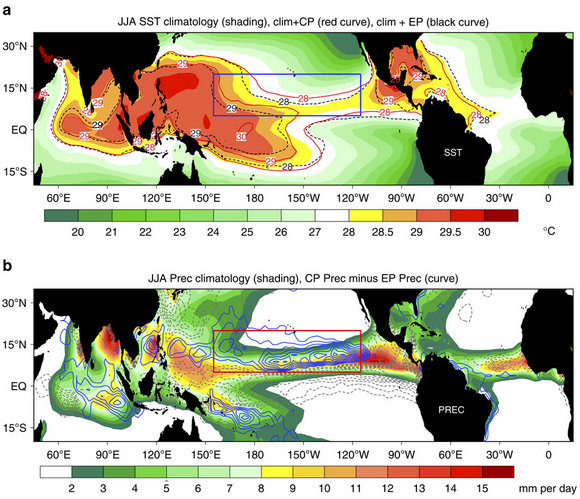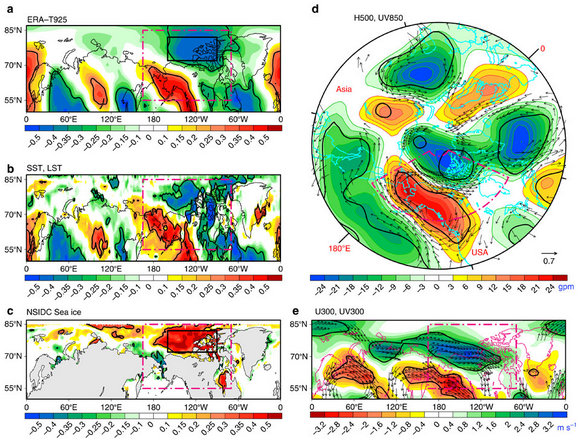Nature Communications Reports a New Article Regarding Shifting El Niño and Arctic Climate Teleconnection by Prof. Song Yang’s Global Change Research Group
Source: Institute of Earth Climate and Environment System & School of Atmospheric Sciences
Written by: Institute of Earth Climate and Environment System & School of Atmospheric Sciences
Edited by: Wang Dongmei
An article with a new perspective on ”Shifting El Niño inhibits summer Arctic warming and Arctic sea-ice melting over the Canada Basin” by the research groups of Prof. Song Yang from the Sun Yat-sen University and Prof. Qigang Wu from the Nanjing University was just published in
Nature Communications. Nature Communications is an open access journal that publishes high-quality research from all areas of the natural sciences and has an Impact Factor of 11.470 according to the 2014 Journal Citation Reports® Science Edition (Thomson Reuters, 2015). This places Nature Communications the third among all multidisciplinary science primary research journals, with Nature being first.
Arctic climate changes include not only the changes in trends and mean states but also the strong interannual variations in various fields. Although it is known that tropical-extratropical teleconnection is sensitive to the changes in the flavors of El Niño, how Arctic climate variability is linked to El Niño, in particular on interannual timescale, remains unclear.
This study demonstrates a long-range linkage between the central Pacific (CP) El Niño and Arctic summer climate. The CP warming related to CP El Niño events deepens the tropospheric Arctic polar vortex and strengthens the circumpolar westerly wind, thereby contributing to inhibiting summer Arctic warming and sea-ice melting.
The potential mechanisms were revealed as follows. First, the linear response of the upper-level atmospheric circulation to CP El Niño warming is robust over the Arctic polar region, whereas the response to eastern Pacific (EP) El Niño warming is not apparent although the intensity of EP El Niño is approximately twice of that of CP El Niño (Fig. 1). Second, the discrepancy in the effects of two types of El Niño on the Arctic circulation can be explained by the background of higher SST over the CP than over the EP, favoring deeper convection along the inter-tropical convergence zone (ITCZ) and to its north (Fig. 2). Poleward shift of the enhanced ITCZ favors a further northward location of large-scale teleconnection to the Arctic region. Third, the teleconnection induced by the CP El Niño can cause deepening and strengthening Arctic polar vortex and circumpolar westerly wind (Fig. 3). Finally, the changes in the Arctic circulation in turn provide favorable large-scale dynamic conditions for cold air mass to be retained in the polar region, leading to Arctic cooling and sea-ice increase, especially over the Canada Basin.

Figure 1: Climate statistics of EP El Niño (left panels) and CP El Niño (right panels).

Figure 2: Regime differences between CP El Niño and EP El Niño. (a) Composite patterns of total SST for CP El Niño (red solid lines) and EP El Niño (black dashed lines). (b) Composite marine precipitation differences (‘CP minus EP’) between CP El Niño and EP El Niño.

Figure 3: Teleconnection patterns related to central Pacific SST warming.
All authors: Chundi Hu, Song Yang, Qigang Wu, Zhenning Li, Junwen Chen, Kaiqiang Deng, Tuantuan Zhang and Chengyang Zhang
URL:
http://www.nature.com/ncomms/2016/160602/ncomms11721/full/ncomms11721.html
This study was supported by the National Key Scientific Research Plan of China (Grants 2012CB956002 and 2014CB953900), the National Natural Science Foundation of China (Grants 41375076 and 41375081) and the China Special Fund for Meteorological Research in the Public Interest (Grant 201206038). Computing resources for this study were provided by the China National Supercomputer Center in Guangzhou.